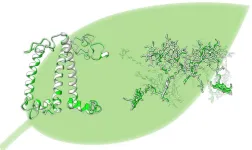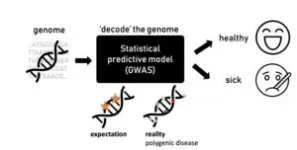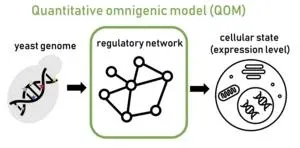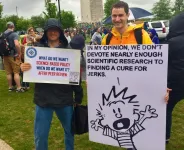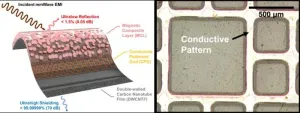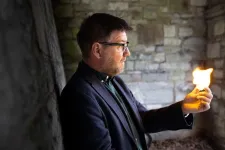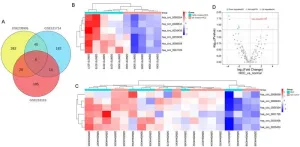Quality control in artificial photosynthesis: validating natural antenna mimicry
Scientists develop new approach to analyze 3D structure of lab-made photosynthetic antenna
2024-10-28
(Press-News.org)
Humans can do plenty, but plants have an ability we don’t: they make energy straight from sunlight, a superpower called photosynthesis. Yet new research shows that scientists are closing that gap.
Osaka Metropolitan University researchers have revealed the 3D structure of an artificial photosynthetic antenna protein complex, known as light-harvesting complex II (LHCII), and demonstrated that the artificial LHCII closely mirrors its natural counterpart. This discovery marks a significant step forward in understanding how plants harvest and manage solar energy, paving the way for future innovations in artificial photosynthesis.
The researchers, led by Associate Professor Ritsuko Fujii and then graduate student Soichiro Seki of the Graduate School of Science and Research Center for Artificial Photosynthesis, had their study published in PNAS Nexus.
Photosynthesis turns sunlight into usable energy, an extremely complicated process that involves hundreds of different molecules and proteins. Among them is LHCII, the most common pigment-protein complex found in chloroplasts of plants and green algae; it is responsible for capturing sunlight and efficiently channeling energy to drive photosynthesis. LHCII itself consists of many proteins and pigment molecules; understanding how this photosynthetic antenna works its magic and then mimicking it is far from simple.
Various attempts have been made to recreate LHCII. The question is: are these imitations anywhere close to nature’s own creation?
“Traditional methods fall short of determining the exact structure of in vitro reconstituted LHCII,” said Dr. Seki.
In vitro reconstitution is a lab technique that allows scientists to rebuild LHCII outside of plants by synthesizing the protein portion of LHCII in E. coli and combining it with natural pigments and lipids.
The research team therefore turned over a new leaf, using cryo-electron microscopy to analyze the 3D structure of the LHCII they reconstituted. This technique, which won the 2017 Nobel Prize in Chemistry, captures images of samples frozen at extremely low temperatures, making it possible for the researchers to gain a highly detailed look at how pigments and proteins are arranged within the complex.
“Our results showed that the lab-created LHCII was nearly identical to the natural version, with only a few minor differences,” Dr. Seki said.
These findings validate the effectiveness of the in vitro reconstitution technique and open up new opportunities for exploring the inner workings of LHCII and its role in photosynthesis, laying the groundwork for future advances in artificial photosynthesis and plant production technologies.
“Our result provides not only a structural foundation for reconstituted LHCII, but also evaluates the functions based on the structure of the reconstituted LHCII,” Professor Fujii said. “We hope this will facilitate further studies on the molecular mechanisms by which plants utilize sunlight for chemical reactions.”
###
About OMU
Established in Osaka as one of the largest public universities in Japan, Osaka Metropolitan University is committed to shaping the future of society through “Convergence of Knowledge” and the promotion of world-class research. For more research news, visit https://www.omu.ac.jp/en/ and follow us on social media: X, Facebook, Instagram, LinkedIn.
END
ELSE PRESS RELEASES FROM THIS DATE:
2024-10-28
“Vaccines are 100% safe, and anyone who doubts this is ignorant”: Have you ever come across messages like this during the pandemic crisis a few years ago? If you often feel that certain public debates—such as those on vaccines or the climate crisis—boil down to a black-and-white clash between two sides demanding, with harsh tones, unquestioning allegiance to their view, you're not entirely wrong. We are rightly accustomed to being warned about pseudoscientific misinformation and fake news, and much research has been devoted ...
2024-10-28
Written by a team of European experts from the marine sciences, Navigating the Future VI discusses how the biodiversity crisis is being played out in the Ocean. It notes that Ocean species large and small are far less well described than their terrestrial counterparts, making it harder to measure declines and their impacts. This publication provides governments, policymakers and funders with robust, independent scientific advice on future seas and Ocean research. With the COP16 on biodiversity already in full swing in Cali, Colombia, it is timely to reflect further on the need to better understand our Ocean biodiversity.
“Climate change ...
2024-10-28
The research team of Dr. Byeongjin Park and Dr. Sang Bok Lee from the Composites & Convergence Materials Research Division at the Korea Institute of Materials Science (KIMS), has developed the world's first ultra-thin film composite material capable of absorbing over 99% of electromagnetic waves from various frequency bands (such as 5G/6G, WiFi, and autonomous driving radar) using a single material.
This electromagnetic wave absorption and shielding material is less than 0.5mm thick and is distinguished by its low reflectance ...
2024-10-28
In 2022, U.S. high school students Calcea Johnson and Ne'Kiya Jackson astonished teachers when they discovered a new way to prove Pythagoras’ theorem using trigonometry after entering a competition at their local high school. As a result, both students were awarded keys to the city of New Orleans, and even received personal praise from Michelle Obama.
Today they become published authors of a new peer-reviewed paper detailing their discoveries, published in the journal American Mathematical Monthly.
Pythagoras’ famous 2,000-year-old ...
2024-10-28
UNDER EMBARGO UNTIL 00:01 GMT MONDAY 28 OCTOBER / 20:01 ET SUNDAY 27 OCTOBER 2024
More social species live longer, Oxford study finds
New research published today (28 Oct) from the University of Oxford has revealed that species that are more social live longer and produce offspring for a greater timespan. This is the first study on this topic which spans the animal kingdom, from jellyfish to humans.
What are the benefits and costs of sociality? Social organisms may enjoy benefits such as sharing resources, being better protected from predators, and having support to raise offspring. However, by living in more ...
2024-10-27
Magic is one of the oldest forms of entertainment, and much of its enchantment is said to rely on the audience not knowing how the tricks are done.
However, while magicians swear to keep their secrets forever when they embark on their profession they are happy to share the tricks of their trade in certain circumstances, a new study shows.
Illusionists who took part in major new research thought it was OK to expose their own techniques, but not those invented by others, and also believe it is acceptable to reveal the secrets behind tricks invented by someone who has since died.
They didn’t think it was right to share the workings of a magic trick just to gain public ...
2024-10-27
Like people, birds have fewer friends as they age, but the reasons why are unclear. New research suggests they may just have no drive to.
In humans, it’s often been assumed that older people have fewer friends because they’re pickier about who they spend their time with. There’s also the issue that there are fewer people of their own age around.
But it’s hard to pick apart the various potential causes for humans, so researchers have turned to animals. The team behind the new research, led by Imperial College London, studied an isolated population of sparrows on the island of Lundy, in the Bristol Channel.
By mapping the ...
2024-10-27
Background and Aims
Early determination of prognosis in patients with acute-on-chronic liver failure (ACLF) is crucial for optimizing treatment options and liver allocation. This study aimed to identify risk factors associated with ACLF and to develop new prognostic models that accurately predict patient outcomes.
Methods
We retrospectively selected 1,952 hospitalized patients diagnosed with ACLF between January 2010 and June 2018. This cohort was used to develop new prognostic scores, which were subsequently validated in external groups.
Results
The study included 1,386 ACLF patients and identified six independent ...
2024-10-27
Background and Aims
Hepatocellular carcinoma (HCC) is one of the most fatal malignancies. Epigenetic mechanisms have revealed that noncoding RNAs, such as microRNAs (miRNAs) and circular RNAs (circRNAs), are involved in HCC progression. This study aimed to construct a circRNA-miRNA-mRNA network in HCC and validate one axis within the network.
Methods
HCC-related transcriptome data were obtained from the Gene Expression Omnibus, and HCC-related genes were sourced from GeneCards to identify differentially expressed circRNAs and miRNAs. ...
2024-10-27
“Our finding that enhanced melting of Arctic sea-ice likely resulted in significant cooling in northern Europe in the earth’s past is alarming,” says Mohamed Ezat from the iC3 Polar Research Hub, lead author of the new study. “This reminds us that the planet’s climate is a delicate balance, easily disrupted by changes in temperature and ice cover.”
Ice-free summer conditions are expected to occur in the Arctic Ocean from the year 2050 onwards.
Earlier this ...
LAST 30 PRESS RELEASES:
[Press-News.org] Quality control in artificial photosynthesis: validating natural antenna mimicry
Scientists develop new approach to analyze 3D structure of lab-made photosynthetic antenna
